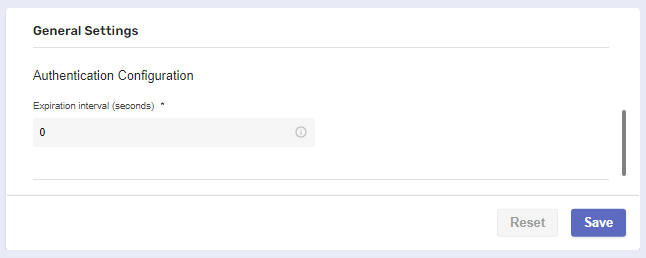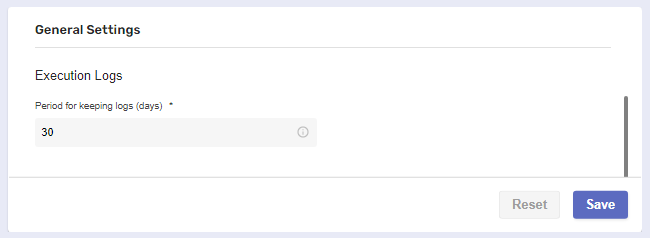General Settings
Overview
This is where you can set login rules and limitations, control worker behavior, configure authentications, and determine the lifecycle of logs.
The General Settings page
Before you begin
Navigate to Global Settings >> System Configuration >> General.
Procedure
There are several settings spread across four sections: General, Workers, Authentication Configuration, and Execution Logs.
General is where your host location and default landing page are set, as well as certain login requirements users need to fulfil.
Setting | Description |
|---|---|
Host location | The name of your host location. To change it, refer to Pliant Support. |
Default landing page | The page you and your users will see after logging in, defined by the relative URL path of your Pliant installation. |
Enforce strong local password policy | If checked, it enforces requirements for passwords such as minimum length and usage of special letters. |
Login attempts | The number of login attempts you can make before being locked out. |
Lockout duration (seconds) | The time you can’t log back in after reaching your login attempt limit. |
The Workers section has settings related to remote worker behaviour.
Setting | Description |
|---|---|
Timeout (seconds) | Time interval after which all jobs the worker is executing will be suspended or killed. |
Total timeout (seconds) | The time interval after which communication between the worker and the API is considered permanently lost. |
Timeout action | The action undertaken after the timeout. |
On Error Behavior | The action undertaken in case of an error. |
Response max size (MB) | The maximum size of the response of a worker. Larger sizes are automatically trimmed to the specified number. “0” implies no trimming. |
Sync response max size (MB) | The maximum size of the response sent to the caller. Larger sizes are trimmed to the specified number. “0” implies no trimming. |
Flow Memory Limit | The memory limit of an execution of a single flow. “0” implies no limitation. |
The Authentication Configuration section deals with active authentications.
Setting | Description |
Expiration interval (seconds) | Cache expiration time interval that determines how often authentications are invalidated. “0” implies no revalidation - the cache never expires. |
The final section, Execution Logs, determines for how many days logs are stored on the platform.
Setting | Description |
Period for keeping logs (days) | Old logs are removed after this period so disk space can be saved. “0” implies logs will be kept forever. |
When you’re done with the configurations, apply your settings with the Save button.




